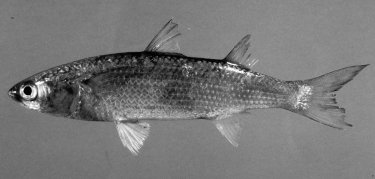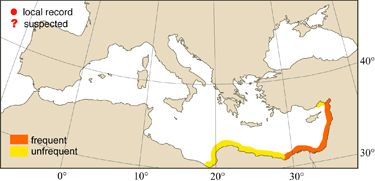
|
Relevant synonyms
Misidentification
Meristic formula
* Note: in recent studies, the generic name has been united with Chelon (see Randall, 1995).
|
|
| photo : David Darom |
|
SHORT
DESCRIPTION
color :
silvery-grey, darker on the back. Often yellowish shades behind eye. size : common 15-25 cm (max. 30 cm). |
DISTINGUISHING CHARACTERISTICS
BIOLOGY / ECOLOGY
habitat :
coastal waters with various substrates; also brackish water and hypersaline lagoons. |
|
1st
MEDITERRANEAN RECORD
|

|
|
DISTRIBUTION
|
ESTABLISHMENT SUCCESS
speculated reasons for success :
|
|
|
MODE OF
INTRODUCTION |
IMPORTANCE TO
HUMANS |
|
KEY
REFERENCES
|